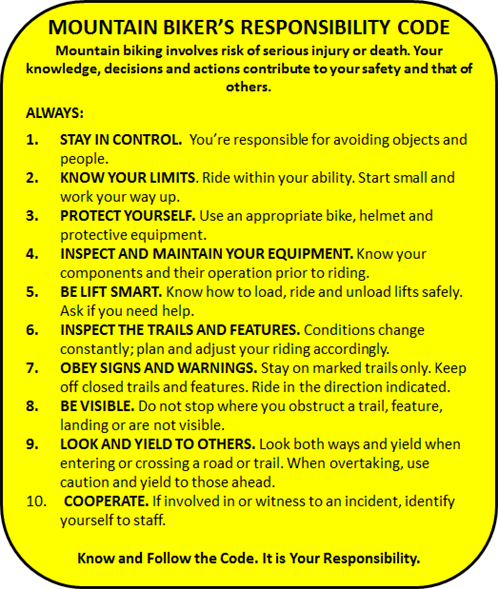

Freeride Trails are often wider than Technical Trails, containing constructed enhanced/modified terrain, obstacles, and features such as jumps, berms, banks, bridges, drops, etc. created from dirt, wood or other materials. Freeride Trails may also incorporate Technical Trail features and designs. Freeride Trails may be hand- and/or machine-built and are most commonly designed to be ridden downhill. Freeride Trails may be accessed via chairlifts, other types of transportation, or from other trails from within or outside of the ski area property that a rider may pedal up.
Freeride Trails are distinguished from Technical Trails by the use of the orange oval with their difficulty symbol – green circle, blue square, single black diamond, or double black diamonds inside of the orange oval (see examples following).
Technical Trails are often relatively narrow and contain features and characteristics found naturally occurring on the area property, it’s slopes, trails, and terrain. Technical Trails may contain roots, gravel, rocks, logs, water crossings, jumps, drops and other natural characteristics and obstacles found in the natural environment, and may also include some man-made obstacles and bridges. Technical Trails may also incorporate Freeride Trail features and designs (see below). Trails may be built by hand and/or machine, and look largely natural. Technical Trails may be designated for one-way or bi-directional travel. Technical Trails may be accessed via chairlift or from other trails within or outside the ski area property. Trails in this category may be shared with other types of trail users such as hikers and equestrians.
Technical Trails are identified by their degree of difficulty symbol – green circle, blue square, single black diamond, or double black diamonds.


